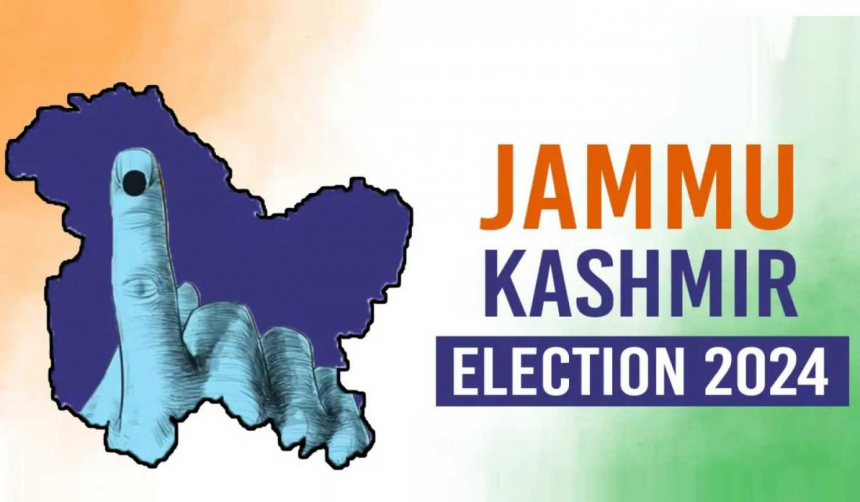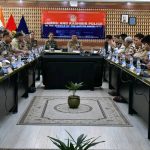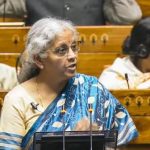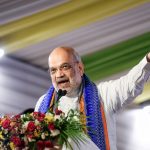As Jammu & Kashmir (J&K) prepares for the counting of votes in its highly anticipated Assembly elections, political observers and the general public alike are bracing for what many believe will be a fragmented and highly complex outcome. The elections, held in a region that has experienced significant political, constitutional, and social upheaval in recent years, carry immense weight for both the local population and the wider political landscape of India.
While the final result hinges on the counting of votes, current projections make it almost certain that J&K will witness a hung Assembly. This scenario will see no single party securing a clear majority, which would necessitate coalitions or alliances in order to form the next government. The electoral map is expected to be divided among the major political players, each holding a portion of the assembly seats, making government formation a complex and delicate process.
The Expected Seat Breakdown
The projected seat breakdown, with a possible variation of 2-3 seats in either direction, is as follows:
- JAMMU & KASHMIR NATIONAL CONFERENCE (JKNC): 32 SEATS
- BHARATIYA JANATA PARTY (BJP): 28 SEATS
- INDIAN NATIONAL CONGRESS (CONGRESS): 15 SEATS
- PEOPLE ’S DEMOCRATIC PARTY (PDP): 7 SEATS
- OTHERS: 8 SEATS
This projected outcome points to a hung Assembly where no single party holds the majority of the 87-seat assembly. To form a government, a party or coalition must command the support of at least 44 members. This leaves J&K in a political impasse, where alliances and coalitions become not only necessary but also precarious.
Background and the Political Context of Jammu & Kashmir
Jammu & Kashmir’s political landscape has undergone seismic shifts in recent years, particularly following the abrogation of Article 370 in August 2019, which stripped the region of its special autonomous status. This move by the central government, led by the Bharatiya Janata Party (BJP), was met with both domestic and international reactions, further intensifying the already fraught political atmosphere in the region. In addition, the region was bifurcated into two Union Territories: Jammu & Kashmir and Ladakh, creating new political realities.
Before the abrogation of Article 370, the state’s political scene was dominated by regional parties like the Jammu & Kashmir National Conference (JKNC) and the People’s Democratic Party (PDP), along with national players like the BJP and Congress. While JKNC and PDP have traditionally drawn their support from the Kashmir Valley, the BJP has strengthened its foothold in the Jammu region. Congress, once a significant force, now struggles to maintain relevance in both Jammu and Kashmir.
Given these divisions, the political stakes for these elections were higher than ever. Parties campaigned not only on development issues, but also on the restoration of J&K’s statehood, the release of political prisoners, and resolving unemployment—key demands from the electorate.
Key Players in the Assembly
The primary political players in the region are as follows:
JAMMU & KASHMIR NATIONAL CONFERENCE (JKNC)
The JKNC, led by Farooq Abdullah and his son Omar Abdullah, remains a major force in J&K politics. Historically, the party has advocated for greater autonomy and self-governance for J&K. The abrogation of Article 370 has been a central issue in their campaign, as they promise to work towards restoring the region’s political and legal rights. However, they also face the challenge of balancing these aspirations with the need for pragmatic alliances in a fractured political landscape.
BHARATIYA JANATA PARTY (BJP)
The BJP has steadily expanded its influence in J&K, particularly in the Jammu region. The party’s agenda is rooted in its national ideology of integration and the abrogation of J&K’s special status was seen as a significant achievement by its supporters. The BJP’s promises during this election have included improving infrastructure, providing employment opportunities, and further integrating J&K with the rest of India. However, the party also faces resistance in the Kashmir Valley, where its popularity remains low.
INDIAN NATIONAL CONGRESS (Congress):
Congress has traditionally played a balancing role in J&K politics but has struggled to maintain a strong foothold in recent years. In this election, Congress is expected to secure a modest number of seats, and its role will likely be that of a coalition partner rather than a major force in government formation. The party’s manifesto focuses on restoring democratic rights, development, and social justice for the people of J&K.
PEOPLE’s DEMOCRATIC PARTY (PDP)
Led by Mehbooba Mufti, the PDP has seen its fortunes wane in recent years, particularly after its controversial alliance with the BJP in the previous state government. This alliance was deeply unpopular in the Kashmir Valley, leading to a loss of public support. Nonetheless, the PDP continues to appeal to those who seek a softer, more dialogue-driven approach to resolving Kashmir’s issues.
The Complexities of Government Formation
In a hung Assembly, the formation of a stable government becomes an intricate task, fraught with political compromises, coalition-building, and balancing competing interests. There are two primary possibilities for government formation in the current scenario:
A GOVERNMENT FORMED BY THE INDIA BLOC
The INDIA bloc, which includes Congress and possibly smaller parties, could attempt to form a government with the support of the JKNC. However, this scenario presents several challenges. The biggest challenge would be fulfilling the aspirations of the people as outlined in the NC’s manifesto, which promises significant reforms and protections for the region.
Beyond that, the NC leadership, particularly Farooq Abdullah and Omar Abdullah, would need to ensure their own political comfort and security. Forming a coalition government with the INDIA bloc could be difficult, as different parties in the alliance might have competing priorities, making consensus-building a slow and arduous process. Additionally, the INDIA bloc’s national leadership might find it challenging to reconcile the specific needs of J&K with its broader national goals.
NC-BJP ALLIANCE
While many observers may rule out the possibility of an alliance between the JKNC and BJP, such an arrangement cannot be entirely dismissed. Despite ideological differences, a coalition between these two parties could be forged under a time-bound Common Minimum Programme (CMP), addressing key issues such as:
- Restoration Of Statehood: A critical demand that could serve as the foundation for an alliance. Restoring J&K’s statehood would offer immediate political relief and could be a face-saving measure for both parties.
- 200 Free Electricity Units: Offering free electricity up to 200 units for households would address an urgent economic concern and help ease the burden on ordinary citizens.
- Unemployment Relief Package: With unemployment being one of the most pressing issues in the region, both parties could work towards creating job opportunities, especially for the youth.
- Repealing Or Modifying the Public Safety Act (PSA): A revision of this controversial law could appease human rights activists and the general population, as it has been a major point of contention.
- Prisoner Relief: Offering relief or transferring prisoners held outside the region could help mend strained relations between the government and families affected by long-term detentions.
- Restoring Rights under Article 35a: Addressing the withdrawal of rights under Article 35A, which previously provided certain privileges to the people of J&K, would help restore some level of public confidence.
An NC-BJP coalition, while controversial, could be feasible if both parties agree to address these key issues under a structured and time-bound framework. Such a coalition would provide the BJP with a foothold in the Kashmir Valley, while the NC could leverage the central government’s power to achieve some of its goals.
Public Sentiment and Potential Backlash
Both potential coalition scenarios carry risks of public backlash. An NC-BJP alliance, in particular, could provoke significant resistance, especially in the Kashmir Valley, where the BJP’s popularity is low. Many see such an alliance as a betrayal of the NC’s core principles and its promises to the people. The PDP’s previous alliance with the BJP provides a cautionary tale; the public backlash to that coalition was severe and resulted in the PDP’s decline in popularity.
However, if key issues like statehood restoration and economic relief are addressed effectively under a CMP, the NC-BJP alliance could potentially survive the initial resistance and deliver a stable government. The critical factor here would be effective communication with the public, reassuring them that the alliance is in their best interest and will work towards their immediate needs and long-term aspirations.
Conclusion
The formation of a government in J&K’s likely hung Assembly will be fraught with complexities. Whether the JKNC aligns with the INDIA bloc or forms an unexpected alliance with the BJP, the challenges will be significant. Meeting public expectations, managing coalition dynamics, and navigating the region’s unique political landscape will require careful and strategic leadership. Ultimately, the focus must remain on addressing the pressing needs of the people, restoring political stability, and ensuring a peaceful and prosperous future for Jammu & Kashmir.
(The author is a Political Analyst and National TV debater. The ideas expressed are his own and can be reached on @[email protected])










